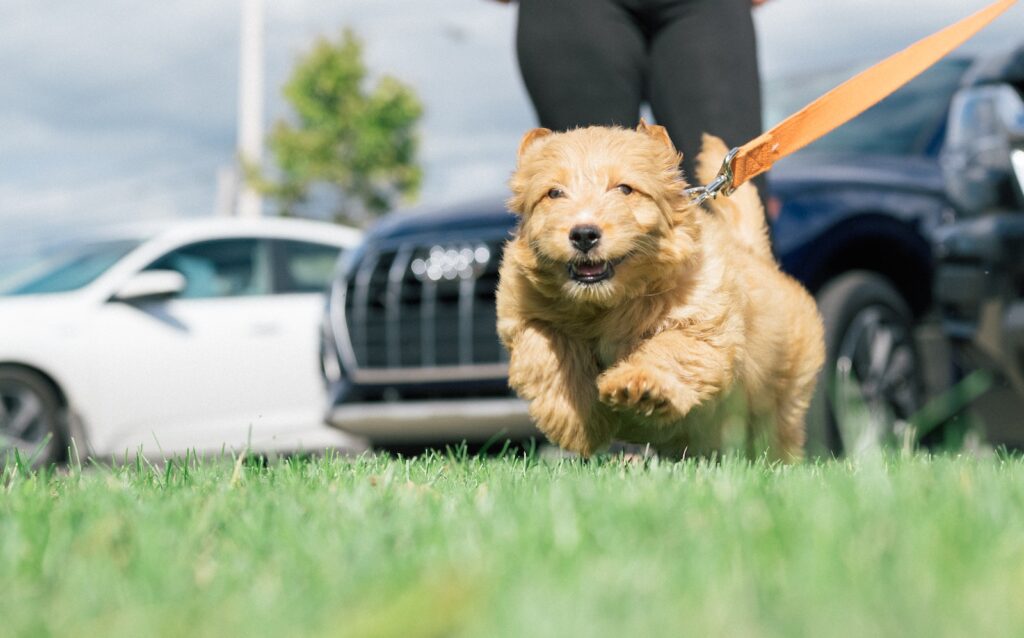Designer Doodles: The Ethics and Controversies
Designer doodles have taken the world by storm, capturing hearts with their adorable looks and friendly dispositions. But as their popularity soars, so do the controversies and ethical questions surrounding these specially bred canines. This article aims to delve deep into the world of designer doodles, examining the ethical concerns, controversies, and perspectives from various stakeholders.
Table of Contents
What Are Designer Doodles?
Designer doodles are not a breed per se, but rather a mix of two or more purebred dogs, often bred for specific traits like hypoallergenic coats, intelligence, or temperament. The most famous example is probably the Goldendoodle, a mix between a Golden Retriever and a Poodle. These dogs are often touted as the best of both worlds, combining the friendly nature of one breed with the hypoallergenic coat of another.
But what exactly makes a doodle “designer”? The term often refers to dogs that have been specifically bred for certain desirable traits, often with a higher price tag to match. This is where the appeal lies for many prospective dog owners. The idea of a dog that has the best traits of two different breeds can be incredibly enticing.
However, it’s essential to remember that genetics is a complex field. Just because a designer doodle is supposed to have certain traits doesn’t guarantee they will. This is why many experts recommend adopting dogs based on their individual personalities rather than their breeds or, in this case, their “designer” status.
The Rise of Designer Doodles
The concept of mixing breeds is not new; what’s new is the branding and marketing that have propelled designer doodles into the limelight. The trend arguably started in the late 20th century, with the breeding of Labradoodles, a Labrador-Poodle mix. Since then, the market for these dogs has exploded, with some puppies fetching prices well into the thousands.

Celebrities have played a role in this trend. Instagram and other social media platforms are filled with photos of stars and their adorable designer pets, further fueling demand. But with this rise in popularity comes a host of issues, from unethical breeding practices to skyrocketing prices that make these dogs inaccessible for average families.
The market demand has also led to a surge in breeders, not all of whom are ethical or responsible. This brings us to some of the most pressing ethical concerns surrounding designer doodles.
The Ethical Concerns
One of the most significant ethical concerns about designer doodles is the health of the dogs themselves. Because they are bred for specific traits, there’s a risk of inbreeding, which can lead to a host of genetic health issues. Some designer doodles are prone to conditions like hip dysplasia, eye diseases, and even certain types of cancer.
Breeding practices are another concern. Not all breeders are created equal, and the rise in demand for designer doodles has led to an increase in “puppy mills” where dogs are bred in poor conditions primarily for profit. These dogs often have health and behavioral issues, not to mention the ethical implications of supporting such businesses.
Then there’s the issue of overpopulation. Millions of dogs are in shelters waiting for homes, and the rise in designer doodles has been cited as a contributing factor to this problem. When people opt for designer dogs, they often overlook mixed-breed dogs that could be a perfect fit for their families, leading to overcrowded shelters and, in the worst cases, euthanasia for the dogs that don’t find homes.
This section has covered the basics of what designer doodles are, their rise in popularity, and the ethical concerns surrounding them. In the following sections, we’ll delve deeper into these controversies and hear from various stakeholders in the debate.
Perspectives from Various Stakeholders
When it comes to the ethics and controversies surrounding designer doodles, opinions are as varied as the breeds themselves. Let’s take a look at the perspectives of some of the key stakeholders in this debate.
Veterinarians
Many veterinarians express concern over the health issues that can arise from breeding dogs for specific traits. They often see the fallout of poor breeding practices, from genetic disorders to behavioral problems. Some vets caution that while designer doodles may be bred for hypoallergenic coats or specific temperaments, there’s no guarantee that these traits will manifest consistently. This can lead to disappointed owners and dogs that end up in shelters.
Ethical Breeders
Not all breeders are in it for the money; many are dedicated to ethical practices that prioritize the health and well-being of the dogs they breed. These breeders often have rigorous standards, including health screenings for breeding dogs and proper care for puppies. However, they also point out that ethical breeding is expensive, which contributes to the high cost of designer doodles.
Animal Rights Activists
Many animal rights activists are vehemently against the breeding of designer doodles, citing the overpopulation problem and the conditions in puppy mills as primary concerns. They argue that the focus should be on adopting dogs from shelters rather than creating more demand for designer breeds.

Dog Owners
For many dog owners, the appeal of designer doodles is hard to resist. They cite the dogs’ friendly dispositions, intelligence, and hypoallergenic coats as major draws. However, some admit that they were not fully aware of the ethical concerns before making their decision and urge prospective owners to do their research.
The Legal Landscape
As the popularity of designer doodles continues to rise, so does the scrutiny from legal bodies. Some states have enacted “puppy lemon laws” that protect consumers who purchase dogs that become ill due to genetic issues. There are also increasing calls for regulation of breeding practices to ensure the health and well-being of these dogs.
Conclusion
Designer doodles are undeniably adorable, but their rise in popularity has brought a host of ethical and controversial issues to the forefront. From health concerns to the conditions in which they are bred, there’s a lot to consider before bringing one of these dogs into your home.
As with any significant decision, it’s crucial to do your research and consider all perspectives. Whether you’re drawn to the hypoallergenic coat of a Goldendoodle or the friendly disposition of a Labradoodle, remember that every dog deserves a loving, forever home—whether it’s a designer doodle or a mixed breed from the shelter.

FAQs
- What are designer doodles?
- Designer doodles are a mix of two or more purebred dogs, often bred for specific traits like hypoallergenic coats or friendly temperaments.
- Why are they so expensive?
- The high cost often reflects the expenses involved in ethical breeding practices, including health screenings and proper care for the dogs.
- Are designer doodles healthier than other dogs?
- Not necessarily. While they may be bred for specific health traits, there’s no guarantee these traits will manifest, and some are prone to genetic health issues.
- What are the ethical concerns surrounding designer doodles?
- Concerns range from the health of the dogs to the conditions in which they are bred. There’s also the issue of dog overpopulation and the impact on shelter dogs.
- What should I consider before getting a designer doodle?
- Do your research, consider the ethical implications, and think about adopting from a shelter as an alternative.
By understanding the complexities surrounding designer doodles, you can make a more informed decision that considers not just the appeal of these adorable dogs, but also the ethical implications of your choice.

